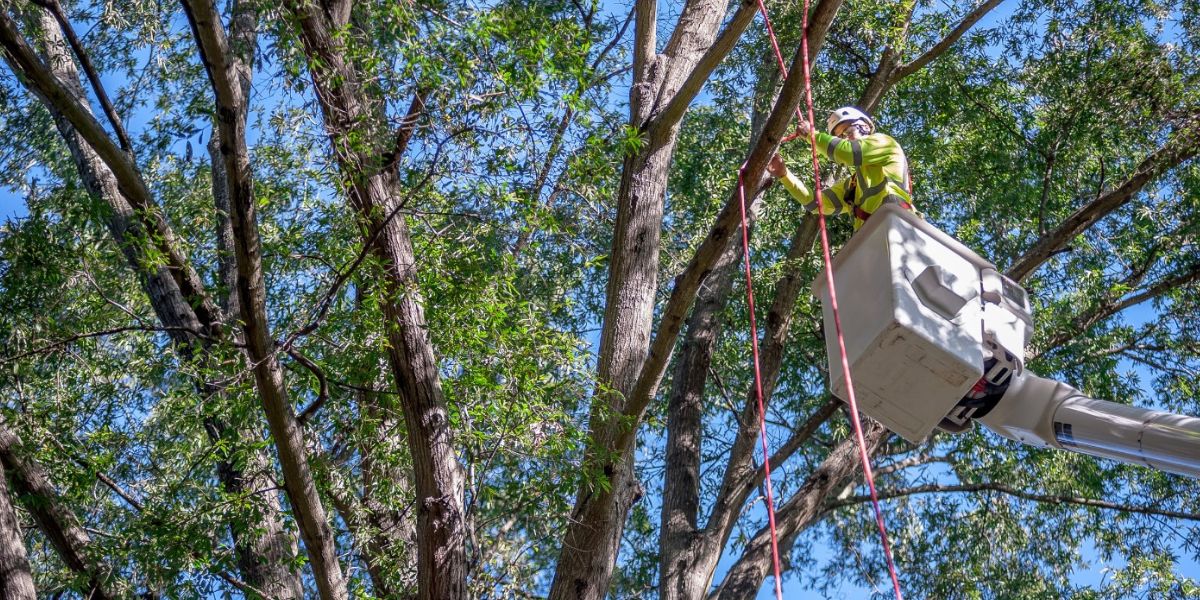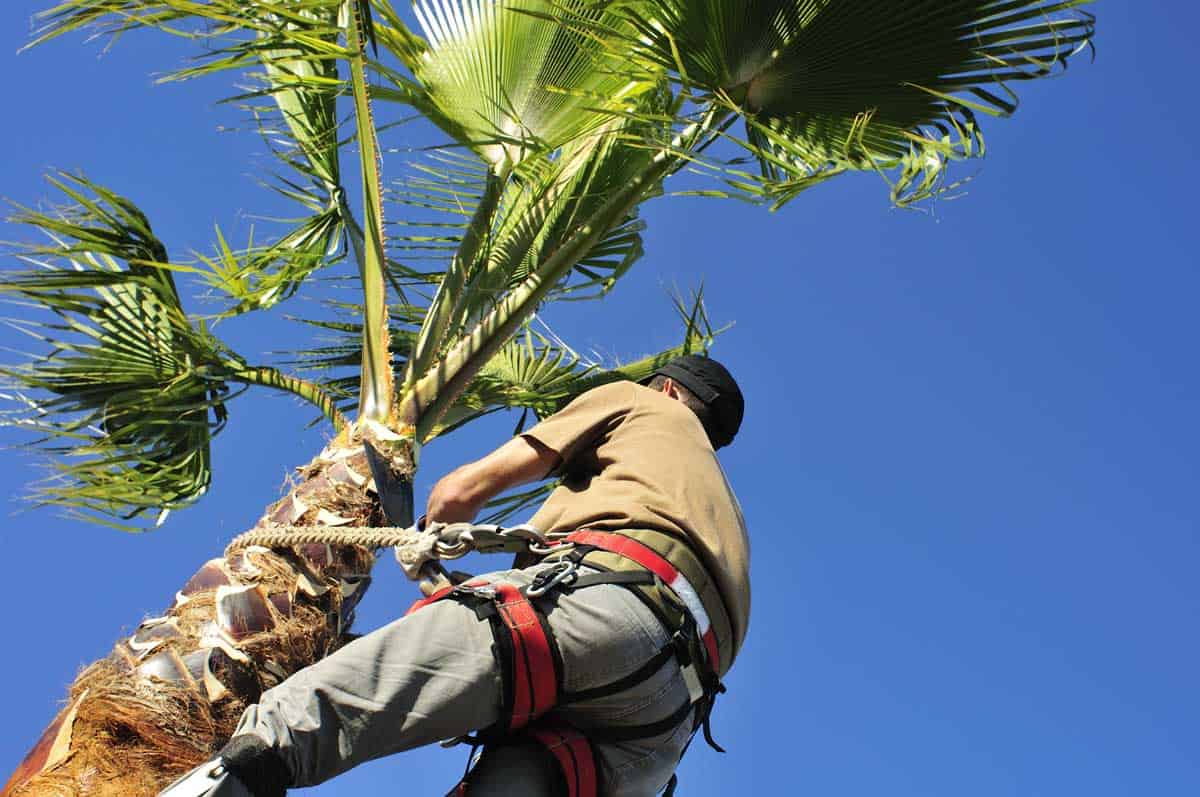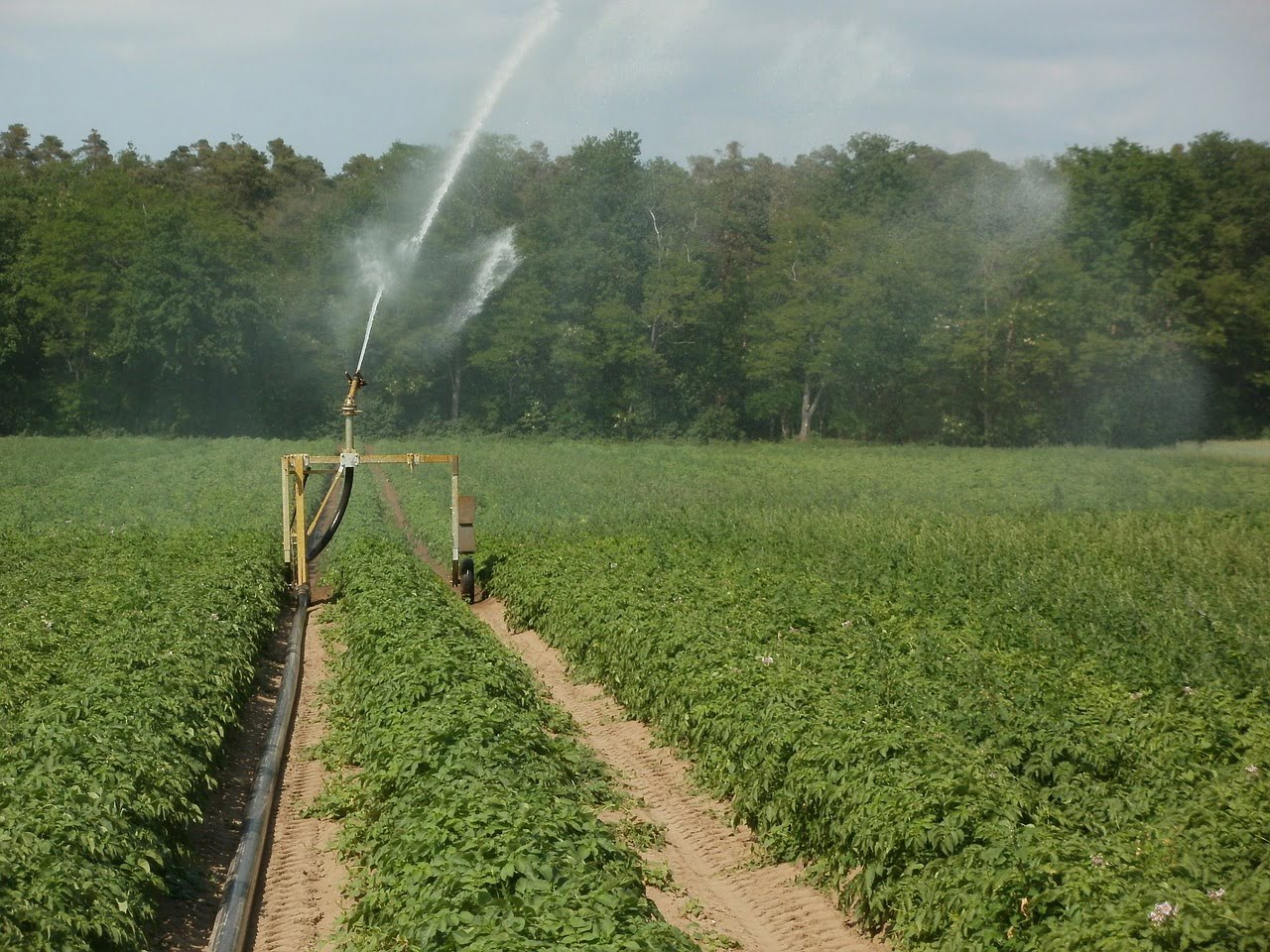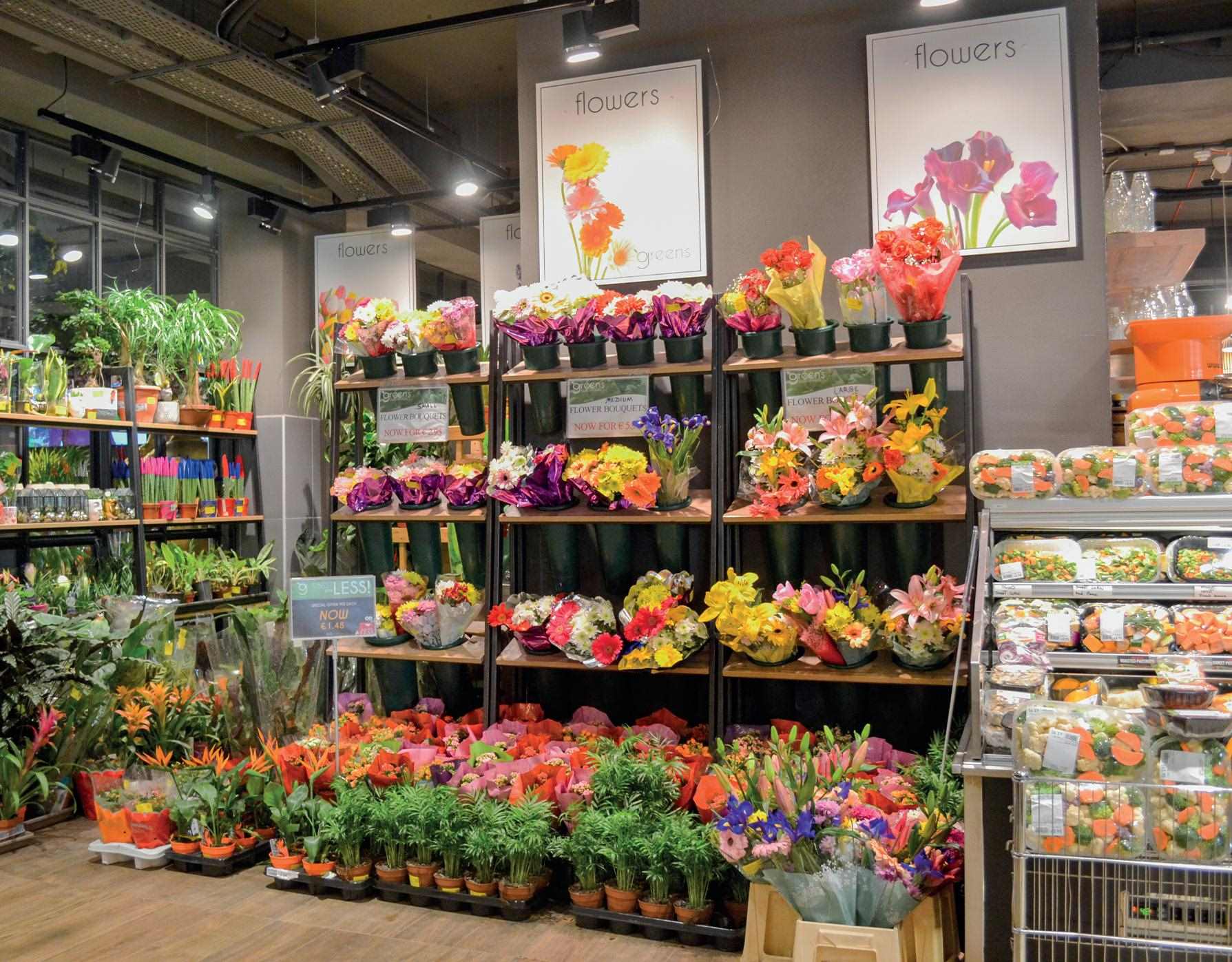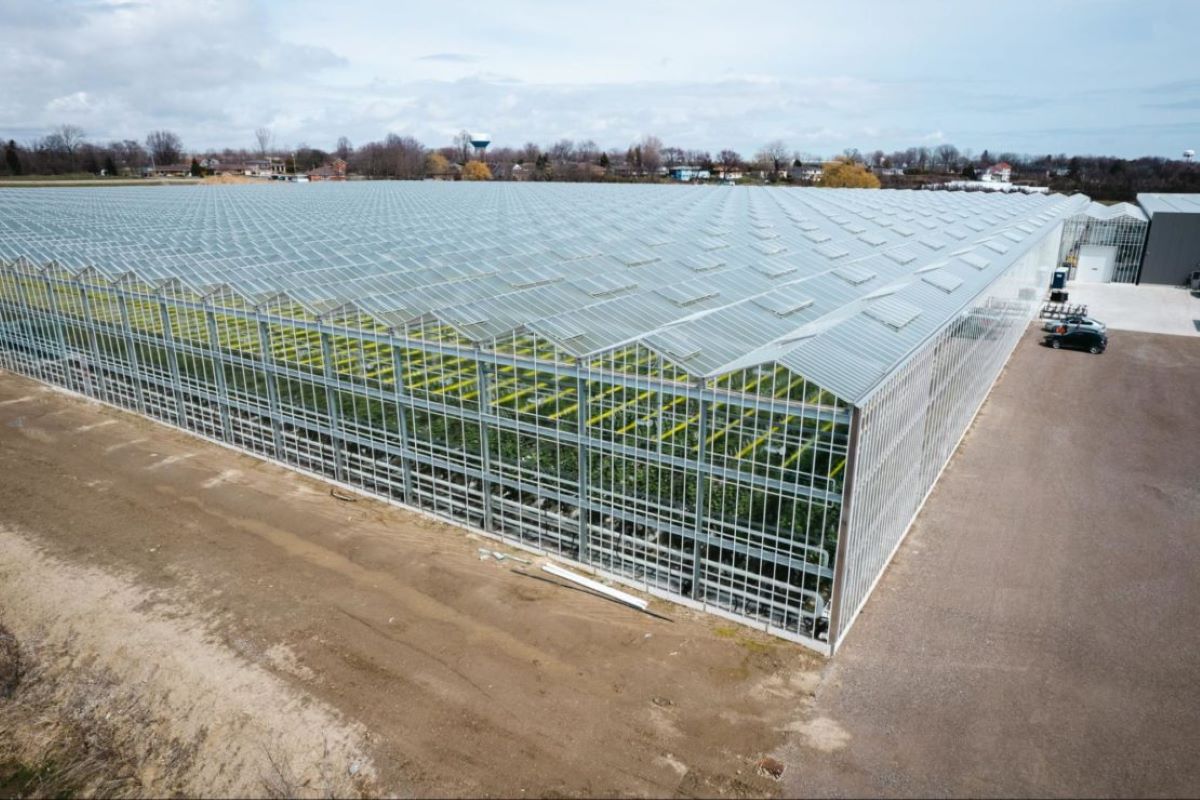Home>Gardening News and Trends>Latest News>How Much Do Trees Cost


Latest News
How Much Do Trees Cost
Modified: January 22, 2024
Discover the latest news and updates on tree costs. Gain insights into the expenses involved in tree purchasing and maintenance.
(Many of the links in this article redirect to a specific reviewed product. Your purchase of these products through affiliate links helps to generate commission for Chicagolandgardening.com, at no extra cost. Learn more)
Table of Contents
Introduction
Trees are not only a beautiful and essential part of our natural landscapes, but they also provide numerous benefits to our environment, health, and well-being. They sequester carbon dioxide, provide shade, improve air quality, reduce noise pollution, and contribute to the overall aesthetics of an area. However, when it comes to planting trees, it’s important to understand the costs involved.
Planting and maintaining trees can be a long-term investment that requires careful planning and consideration. The cost of trees can vary significantly depending on several factors, including the type and size of the tree, as well as additional costs associated with the planting process. In this article, we will explore the different factors that affect tree costs, the types of trees and their associated costs, as well as strategies to make tree planting more cost-effective.
By gaining a comprehensive understanding of tree costs and implementing smart planting strategies, individuals, communities, and organizations can make informed decisions when it comes to tree planting initiatives. Furthermore, recognizing the economic benefits that trees bring can help justify the investment in tree planting projects.
Let’s dive into the factors that influence tree costs and explore how we can make tree planting not only an environmentally conscious choice but also an economically viable one.
Factors Affecting Tree Costs
The cost of trees can vary based on several factors that impact their availability, growth, and overall value. Understanding these factors can help in evaluating and negotiating tree costs. Here are some key factors that influence tree costs:
- Type and Size of the Tree: Different tree species have varying growth rates, sizes, and lifespans. Some trees, like fast-growing species, may be more affordable due to their abundance and ease of cultivation. On the other hand, slow-growing, rare, or exotic tree species may come with a higher price tag.
- Age of the Tree: Mature trees take longer to grow and require extra care and maintenance. As a result, older trees tend to be more expensive than younger ones.
- Tree Nursery: The source of the tree, such as a local nursery or specialized tree farm, can affect its cost. Nurseries with a wide selection of healthy and well-maintained trees may charge a premium.
- Tree Health and Condition: Healthy and disease-free trees are generally more expensive. Trees that require remedial care or have certain conditions, such as pest infestations or structural deficiencies, may be priced lower to account for the additional care they will need.
- Transportation and Delivery: The distance between the tree nursery and the planting site, as well as the ease of access, can impact the cost of transportation. Large or fragile trees may require specialized equipment and handling, adding to the overall cost.
- Installation Requirements: If the tree planting process requires specific site preparation, such as soil remediation or irrigation system installation, the associated costs will contribute to the overall expenses.
It’s important to note that tree costs can vary significantly depending on your location, local market conditions, and other factors specific to your region. Consulting with local arborists, horticulturists, or tree experts can provide valuable insights into the local tree market and help determine a reasonable cost for the desired tree species.
By taking these factors into consideration, you can better understand the pricing of trees and make informed decisions when it comes to purchasing and planting trees for your property or project. While tree costs may seem high initially, it’s crucial to recognize the long-term benefits and value that trees bring to the environment and our communities.
Types of Trees and Their Costs
When it comes to choosing trees for planting, there is a wide variety of species to consider, each with its own unique characteristics and associated costs. Here are some popular types of trees and their approximate costs:
- Deciduous Trees: Deciduous trees, such as oak, maple, and birch, are known for their vibrant fall foliage and provide ample shade during the summer months. The cost of deciduous trees can range from $50 to $500, depending on the size and species.
- Evergreen Trees: Evergreen trees, including pine, spruce, and cedar, retain their foliage throughout the year and are ideal for creating privacy and windbreaks. The cost of evergreen trees can vary from $75 to $600, depending on the size and species.
- Fruit Trees: Fruit-bearing trees, such as apple, cherry, and peach trees, not only add beauty to landscapes but also provide a source of fresh, homegrown fruits. The cost of fruit trees can range from $25 to $150, depending on the size and variety.
- Native Trees: Planting native trees is beneficial as they are well-adapted to the local climate and support the local ecosystem. The cost of native trees can vary depending on the region and availability but generally falls within the same price range as other tree types.
- Exotic and Rare Trees: Exotic and rare tree species are unique and sought after, making them more expensive. The cost of these trees can range from a few hundred dollars to several thousand dollars, depending on their rarity and demand.
Keep in mind that these price ranges are approximate and can vary depending on factors such as tree size, age, health, and market conditions in your area. Additionally, purchasing trees from reputable nurseries or working with experienced tree professionals can help ensure the quality and health of the trees you acquire.
Prioritizing the selection of tree species that thrive in your local climate and are resistant to common pests and diseases can also contribute to a successful and cost-effective tree planting endeavor. Consulting with local arborists or tree experts can provide valuable guidance on suitable tree choices and their associated costs.
Remember, investing in trees is not only an investment in the beauty of your surroundings but also in the numerous benefits they provide to the environment and your community. The initial cost of trees is outweighed by the long-term value they bring in terms of improved air quality, reduced energy costs, and increased property value.
Additional Costs Associated with Tree Planting
When planning a tree planting project, it’s important to consider the additional costs that go beyond the purchase price of the trees. These costs are necessary for ensuring the successful establishment and long-term health of the trees. Here are some common additional costs associated with tree planting:
- Site Preparation: Before planting the trees, site preparation may be needed, which can involve clearing vegetation, removing rocks or debris, and improving the soil quality. This may require hiring professionals or renting equipment, adding to the overall project cost.
- Professional Services: Hiring certified arborists, landscape designers, or tree planting services can provide expertise and ensure proper tree selection, planting techniques, and maintenance practices. However, these professional services come at an additional cost, which varies depending on the scope of the project.
- Tree Staking and Supports: Young trees often require staking or support systems to ensure they grow upright and withstand strong winds. The cost of tree stakes, ties, and other support materials should be factored into the overall tree planting budget.
- Irrigation and Watering: Providing adequate water to newly planted trees is crucial for their survival and establishment. Depending on the location and availability of water sources, additional costs may include installing irrigation systems or regular watering until the trees become established.
- Mulching: Mulching around the base of the trees helps retain moisture, suppress weeds, and regulate soil temperature. The cost of purchasing mulch or organic materials should be considered as part of the tree planting project.
- Maintenance and Care: Ongoing care and maintenance, such as pruning, fertilization, and pest control, are essential for the long-term health of the trees. These costs should be taken into account when budgeting for tree planting projects.
It’s crucial to include these additional costs in the planning and budgeting stages of tree planting initiatives. Proper allocation of resources ensures that trees have the best chance of survival, growth, and providing their desired benefits in the years to come.
By being aware of these extra costs associated with tree planting, individuals, communities, and organizations can make informed decisions and budget accordingly. Consider reaching out to local tree planting programs, non-profit organizations, or government agencies, as they may provide resources or funding opportunities to support tree planting efforts.
Remember, while the initial investment may seem significant, the benefits provided by trees, such as improved air quality, reduced energy costs, and enhanced property value, far outweigh the additional expenses incurred during the planting and establishment phase.
Cost-Effective Tree Planting Strategies
Planting trees can have a long-lasting impact on the environment and our communities. However, it’s essential to implement cost-effective strategies to make the most of our resources. Here are some strategies to consider when planning a tree planting project:
- Choose Native or Adapted Species: Native or locally adapted tree species are more likely to thrive in the local climate and soil conditions, reducing the need for costly interventions like irrigation or pest control. These trees also have a better chance of survival, reducing the need for replacements in the future.
- Maximize Tree Spacing: Properly spacing trees during planting allows each tree to receive adequate sunlight, water, and nutrients, reducing competition and potential stress. By spacing trees appropriately, you can maximize their growth and health without overcrowding the area, which can lead to increased maintenance costs.
- Consider Tree Size: Purchasing smaller saplings or seedlings can be more cost-effective than buying larger, more mature trees. Although smaller trees may take longer to reach their full potential, they are often cheaper and require less initial investment. With proper care and maintenance, they will still grow into healthy, mature trees over time.
- Utilize Volunteers or Community Engagement: Engaging community members or volunteers in the tree planting process can help reduce labor costs. Organizing planting events or partnering with local organizations or schools can not only save money but also foster a sense of community and environmental stewardship.
- Explore Available Grants or Funding: Research local grants, sponsorships, or funding opportunities that may be available for tree planting initiatives. Many organizations offer financial support for community-driven projects that aim to enhance the environment. These resources can help offset some of the costs associated with tree planting.
- Maintain Trees Properly: Regular maintenance and care, such as pruning, proper watering, and mulching, are necessary for the long-term health and survival of trees. By investing in proper tree care, you can minimize the risk of diseases and pests, preventing costly treatments or tree replacements down the line.
Implementing these cost-effective strategies can help stretch your tree planting budget while still achieving the desired environmental and aesthetic goals. Additionally, involving the local community and creating a sense of ownership can contribute to the long-term success and sustainability of the tree planting project.
Remember, tree planting is not a one-time investment but a long-term commitment to the environment and our future. By being mindful of cost-effective strategies and considering the long-term benefits of trees, we can create a greener and healthier world for generations to come.
The Economic Benefits of Trees
While trees provide numerous environmental and social benefits, they also offer significant economic advantages to individuals, communities, and even entire regions. Understanding the economic benefits of trees can help justify the investment in tree planting initiatives. Here are some key economic benefits associated with trees:
- Increased Property Value: Trees enhance the curb appeal and aesthetics of properties, making them more attractive to potential buyers or renters. Studies have shown that homes and businesses with trees on their premises have higher property values, resulting in increased equity for property owners.
- Energy Cost Savings: Properly positioned and well-maintained trees can provide shade in the summer, reducing the need for air conditioning, and act as windbreaks in the winter, lowering heating costs. These energy-saving benefits not only lower utility bills for homeowners but also contribute to reducing overall energy demand and carbon emissions.
- Stormwater Management: Trees play a crucial role in managing stormwater runoff by absorbing rainwater and reducing the risk of flooding. By intercepting rainfall, trees help mitigate the strain on municipal stormwater infrastructure, minimizing the need for costly expansion or maintenance.
- Improved Air Quality: Trees act as natural air filters, absorbing harmful pollutants and releasing oxygen. This helps improve air quality, leading to better health outcomes and potentially reducing healthcare costs associated with respiratory illnesses.
- Boosted Tourism and Business: Areas with well-maintained tree canopies often attract tourists and visitors, contributing to local economies. Beautiful landscapes with trees can also enhance the appeal of commercial spaces, leading to increased customer traffic and sales for businesses.
- Job Creation and Economic Opportunities: Tree planting initiatives, maintenance projects, and related industries create job opportunities. From arborists and horticulturists to landscapers and tree care service providers, the tree industry creates employment and stimulates economic growth.
These economic benefits demonstrate the tangible value that trees bring to our communities and economies. By investing in tree planting and maintenance, we can create sustainable and livable environments while reaping the financial rewards. Additionally, local governments can benefit from cost savings in areas such as stormwater management and energy infrastructure expenditures.
It is essential for policymakers, businesses, and individuals to recognize and factor in the economic benefits of trees when making decisions about land use, urban planning, and environmental management. By incorporating trees into our built environments, we not only enhance the economic well-being of our communities but also create healthier and more resilient places to live, work, and enjoy.
Conclusion
Tree planting is an investment in our environment, health, and economic well-being. While tree costs and associated expenses may initially seem daunting, understanding the factors that affect tree costs and implementing cost-effective strategies can make tree planting more accessible and financially viable.
Factors such as the type and size of the tree, age, health, and transportation costs can impact tree prices. By choosing native or adapted species, maximizing tree spacing, considering tree size, and involving the community, we can make the most of our resources and ensure successful tree planting projects.
Additional costs associated with tree planting, such as site preparation, professional services, supports, and maintenance, should be factored into the budget. By allocating resources for these necessary expenses, we can provide the care and environment needed for the long-term success of our trees.
Furthermore, recognizing the economic benefits of trees can help justify the investment. Trees increase property values, generate energy cost savings, manage stormwater, improve air quality, boost tourism, create job opportunities, and stimulate local economies. These economic benefits contribute to the overall well-being of individuals, communities, and regions.
In conclusion, while there are costs associated with tree planting, the benefits to our environment, health, and economy far outweigh the initial investment. By understanding the factors that affect tree costs, implementing cost-effective strategies, and considering the economic advantages, we can make tree planting a sustainable and rewarding endeavor. Let’s embrace the beauty and benefits that trees bring to our lives and work together to create greener and healthier communities.
